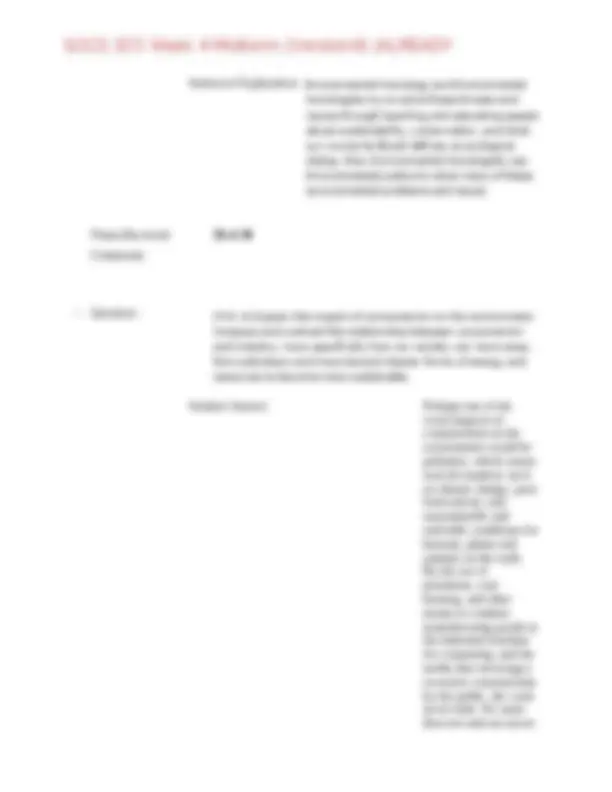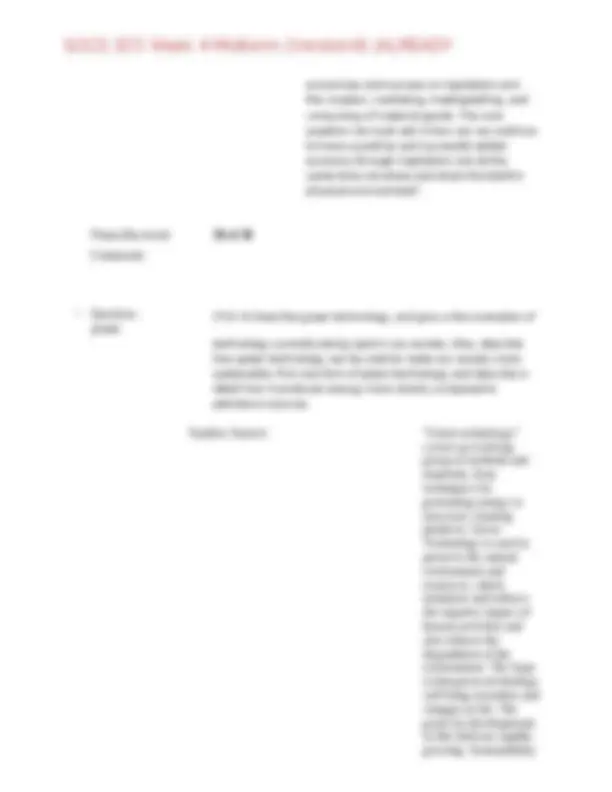











Study with the several resources on Docsity

Earn points by helping other students or get them with a premium plan


Prepare for your exams
Study with the several resources on Docsity

Earn points to download
Earn points by helping other students or get them with a premium plan
Community
Ask the community for help and clear up your study doubts
Discover the best universities in your country according to Docsity users
Free resources
Download our free guides on studying techniques, anxiety management strategies, and thesis advice from Docsity tutors
SOCS 325 Week 4 Midterm (Version4) ALREADY GRADED A+ (1).docx
Typology: Exams
1 / 17

This page cannot be seen from the preview
Don't miss anything!










GRADED A+
Page:
continued global warming?
zones Changes in rainfall patterns Rising sea levels All of the above
United States to conserve which of the following precious resources?
Soil Petroleum Recyclable plastics
distributed among the peoples of the earth. disproportionately distributed so that the middle-class must foot the bill. unevenly distributed so
GRADED A+
Sociologists try to solve these threats and issues through teaching and educating people about sustainability, conservation, and what our course textbook defines as ecological dialog. Also, Environmental Sociologists use Environmental Justice to solve many of these environmental problems and issues.
Compare and contrast the relationship between consumerism and industry; more specifically how our society can more away from petroleum and more toward cleaner forms of energy and resources to become more sustainable.
GRADED A+
resources further stresses the Earth's environment. As the human population continues to grow, there is more demand and stress on these resources. Most relevant is the strong focus and need for oil and coal. One would just have to monitor the news to see some very big oil spills and miners either killed or put in very hazardous working conditions. Of course, no one is asking that we totally stop using these resources, but we must as a society come up with more efficient ways to create more sustainability. Environmental Sociologists are often called to take on these issues.
to marketing and capitalism. Provide a few examples. Compare and contrast some of the positive and negative aspects of capitalism. How does this relate to free markets?
GRADED A+
GRADED A+
society use these materials. Some people eat these materials in the form of food. Of course, the over consumption of food often causes obesity issues which is currently a major global epidemic. The overconsumption and abuse of any material is obviously not good for our society and global environment. How can we prevent this global overconsumption? Each year global consumption rates increase at expediential and alarming rates. This is largely due to more and more countries becoming more industrialized as well as the global population gradually increasing. How much is too much and do you think we will ever run out of certain materials? Food? Resources? Then what? We must also ask what makes people consume all of these materials. Large scale marketing and global Capitalism causes people to want all of these material goods. Supply and demand largely control consumption and global consumption rates. Many people often desire what they can't get. For example, when Wii first came out, everyone wanted one but Nintendo could not produce them fast enough. Another example would be the Tickle me Elmo Dolls and The Cabbage Patch Kids. Most industrial nations today base their overall
GRADED A+
GRADED A+
machine or product from a complex machine that produces the least amount of pollution and stress on the environment. Also, these products should biodegrade and or be able to be recycled and reused with ease. In terms of green energy technology, this can be defined as any type of energy we can get from not burning carbon (oil and coal) into the atmosphere which is believed to cause cancer / illnesses worldwide and contribute to Climate Change and Global Warming as discussed in Week 2. Examples of green energy technology are solar panels, wind turbines, hydroelectric plants, nuclear plants, the process of biomass, and geothermal plants. Green technology though good for the environment may not always be easily implemented. One example of this can be seen in the Sun Chips snack. Sun Chips recently came out with a new type of bag that fully biodegrades, but consumers complained that they were too noisy and Frito Lay, the producer of Sun Chips, quickly went back to the less biodegradable bag. Of course, I am sure some people would take this noise pollution over the less biodegradable bags any day, but probably not for the majority of society.
GRADED A+ kitchen and household appliances that use less water, gas, and electricity. There have been some great governmental programs recently that encouraged the public to trade in their old cars (Cash for Clunkers) and even old appliances for reduced prices on new ones that are far more efficient and better for the global environment. More examples include organic farming and the production of organic foods which helps the environment by not using dangerous pesticides on the crops. Pesticides used on non-organic foods have been proven to cause extensive damage to global ecosystems. Almost every industry today has started some form of green movement, but this is just a start and only touches the surface. We as a society must go all out and fully incorporate this green technology revolution in creating a more sustainable society.
Provide a few detailed examples. Explain how environmental sociologists think we can solve issues of poverty. How do you think we can solve worldwide poverty?
GRADED A+
GRADED A+ equator and or near deserts. How can we solve these issues of people being
GRADED A+ unevenly distributed globally? We can't just move people around. These are some of the issues Environmental Sociologist and our global society must address in order to be more successful.
Page: